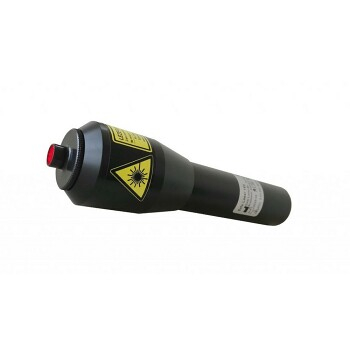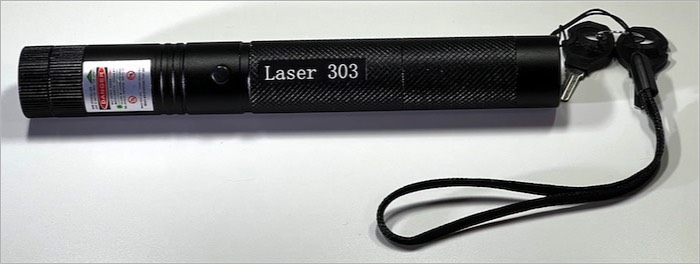Handy Ideas On Deciding On A Safe Laser Therapy
Handy Ideas On Deciding On A Safe Laser Therapy
Blog Article
How Do Safe Laser Low-Level Laser Therapy (Lllt) That Is A Low-Level And Safe Laser, Aid In Healing Ulcerative Wounds?
Safe Laser low-level laser therapy (LLLT) by its stimulation of tissue repair aids in healing ulcerative lesions. LLLT accelerates tissue regeneration and repair by encouraging metabolic processes in cells. It stimulates collagen synthesis, activation of fibroblasts, and angiogenesis (formation new blood vessels), all of which are important processes for wound healing. This can help speed the healing of ulcerative lesions.
Reduced Inflammation- LLLT has anti-inflammatory effects through preventing the release of pro-inflammatory cytokines as well as promoting the production of anti-inflammatory mediators. LLLT can be used to reduce the inflammation of ulcerative sores. It can aid in healing by decreasing the amount of tissue damage.
Pain Relief LLLT modulates pain perception through nerve conduction, and reducing the release substances that cause pain, such as substance P. In the case of ulcerative wounds which can be associated with severe discomfort and pain, LLLT can help alleviate discomfort and improve the overall patient experience.
Improved Blood Circulation LLLT increases microcirculation and vasodilation leading to an increased blood flow at the site of the wound. Improved blood flow delivers oxygen and nutrients, which aids in healing. It also aids in the elimination of waste products and toxic substances from the wound.
Antimicrobial Effects - LLLT has been proven to have antimicrobial properties that can reduce the risk of infection for ulcerative lesions. LLLT promotes bacterial clearance which reduces the risk of infection in wounds.
Reduced Scar formation- LLLT could help minimize the formation of scars on injury due to ulcers by promoting proper tissue repair and the remodeling. Through stimulating collagen fiber production and promoting the alignment of collagen bundles, LLLT helps produce stronger and more organized scar tissue.
Overall Low-Level Laser Therapy using Secure Laser is a highly effective and non-invasive treatment for ulcerative wounds. It promotes faster healing of wounds, lessens the pain and enhances overall wound outcomes. However, it is essential to talk with a medical expert for the proper treatment of wounds and treatment recommendations before using LLLT for wounds that are ulcerative. Take a look at the best safe laser bérlés for blog examples including lágylézeres készülék, lágylézer készülék, safe laser kezelés budapest, orr lézer készülék, laser lézer, gyógyító lézer készülékek, lágylézer hatása, laser kezelés, lágylézer kezelés budapest, safe laser készülék and more.
What Are The Advantages Of Low-Level Laser Therapy That Is Safe (Lllt) For Nose Issues?
Low-level Laser Therapy (LLLT) is an effective and safe way to treat nasal problems. LLLT helps reduce nasal inflammation, sinusitis and allergic rhinitis.
Pain Relief - LLLT reduces pain by reducing nerve conduction. This may provide relief for those suffering from nasal pain.
Improved Healing of TissuesThe Enhanced Healing of Tissues LLLT can speed up the process of tissue regeneration and repair by stimulating cell metabolism and growth. LLLT can be effective in the treatment of conditions like nasal ulcers and nasal mucosal injury. It is able to speed up tissue healing, reducing the risk of complications and improving the health of the nasal.
Improved Blood circulation LLLT promotes microcirculation as well as vasodilation. The result is increased blood flow for the nasal tissues. The improved blood circulation will help deliver oxygen and nutrients to the inflamed or injured tissues, which aids in healing and lessening inflammation.
Reduced nasal congestion- LLLT helps reduce nasal obstruction through the stimulation of vasodilation. It can also help reduce nasal mucosal swelling. It can be beneficial to those suffering from chronic sinusitis aswell in allergies or rhinitis.
Treatment of Nasal AllergiesManagement of Nasal Allergies LLLT could help ease symptoms associated with nasal allergies by reducing inflammation in the nasal passages and sinuses. LLLT helps reduce symptoms such as sneezing and itching by modulating the immune system and decreasing histamine release.
Safe Laser's low-level laser therapy provides a noninvasive, drug-free solution to various nose conditions, reducing symptoms like irritation, pain and nasal congested. Before using LLLT to treat nose problems you must consult a professional healthcare provider for a thorough diagnosis and suggested treatment. Have a look at the top rated safe laser for blog advice including safe laser bérlés, safe laser használata, lágylézer készülék, lágylézer ár, lágylézer kezelés budapest, laser hu, lágylézer árak, safe laser készülék, lagylezer terapia, safe laser bérlés and more. 
What Is The Time Frame For The Safe Laser Device To Be Effective On Conditions Of The Ear, Nose And Throat?
Safe Laser's low-level therapy (LLLT), which can be used to treat ENT conditions, can produce different results based on the specific condition that is being treated. Other factors are the seriousness of the condition and the patient's response treatment. Typically, a series of LLLT for a specific time is suggested to achieve optimal outcomes.
The severity and type of the conditionThe severity and the type of ENT conditions can impact the number of LLLT sessions that are required for treatment. Conditions like tonsillitis and laryngitis require different treatment methods and various LLLT sessions.
The individual's response to therapy Personal factors, like general health and immune system function, can influence the way patients respond to LLLT. Some individuals will respond to treatment more quickly and experience a faster improvement in their symptoms. Some people might require longer therapy.
Treatment Protocol - The treatment protocols recommended by ENT specialists can have a significant impact on the frequency and number of LLLT treatments for ENT disorders. The treatment plan may be tailored to the individual, and may include scheduling LLLT treatments several times per week.
Acute vs. Chronic conditions - The quantity of LLLT sessions to treat is affected by the distinction between acute and chronic conditions. Acute sinusitis, such as acute pharyngitis or acute sinusitis could require less treatment to achieve relief. Chronic conditions such chronic rhinosinusitis such chronic laryngitis will require a longer treatment.
Some individuals may notice improvements in their ENT condition after a few LLLT treatments, whereas others may require additional sessions to achieve the most effective results. To maximize the benefits of LLLT therapy, you must follow the treatment plan recommended by your ENT specialist. Also, you must attend all scheduled LLLT sessions. In addition, continuous surveillance of symptoms and communications with an ENT physician are important to ensure appropriate treatment and to make adjustments to treatment plans when necessary.